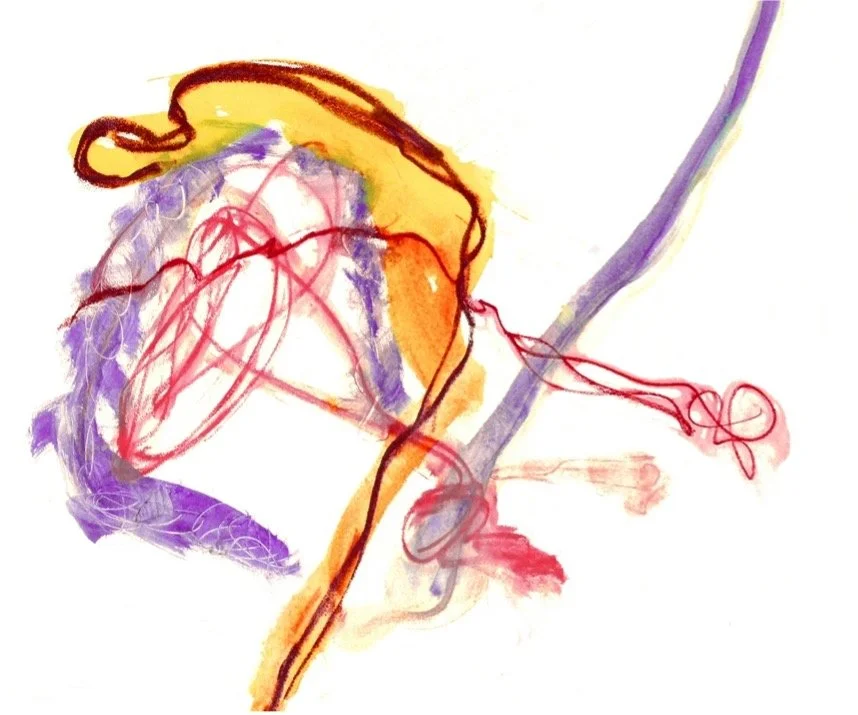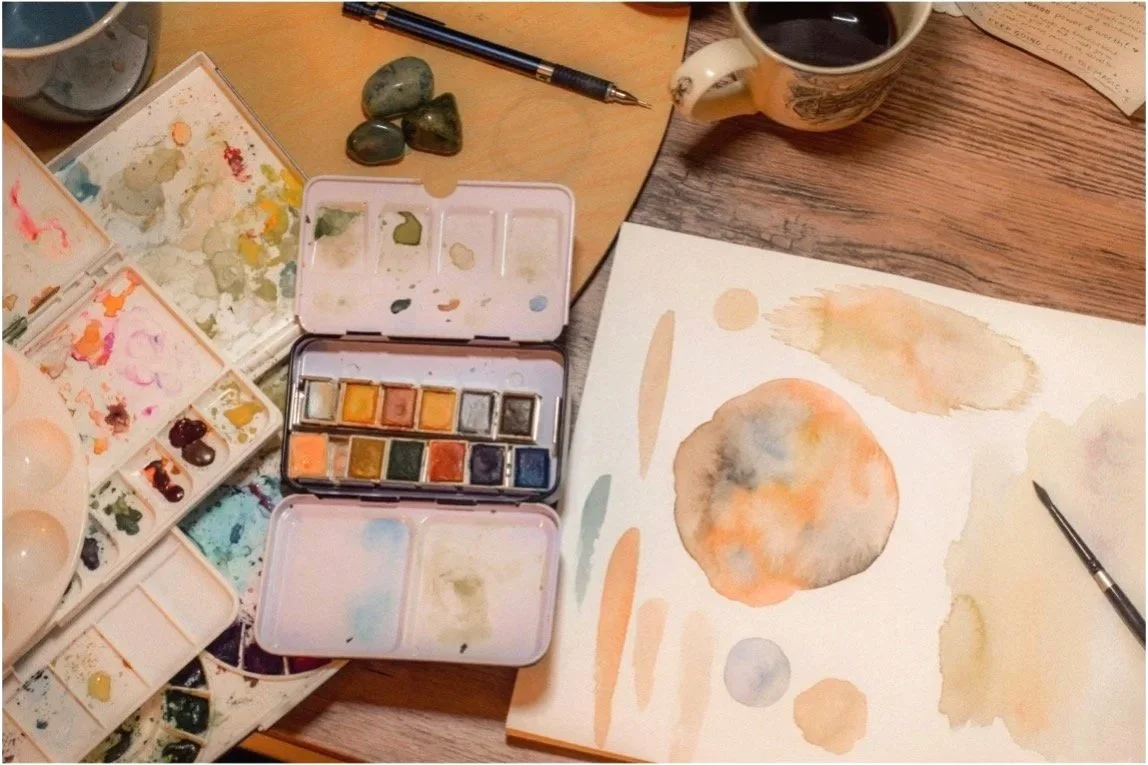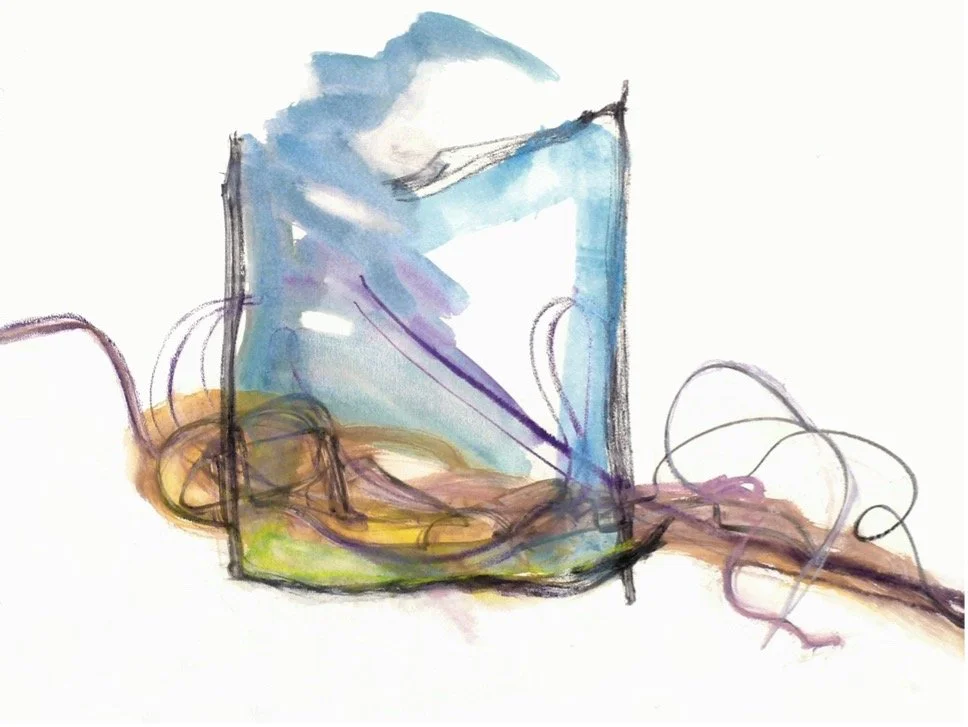Exploring the Mind Body Connection: Felt Sense
Written by Deanna Becker, ATR-P, LPC, CCTP
What is the Felt Sense?
The felt sense is a concept developed by philosopher Eugene Gendlin. It refers to a deep, internal bodily awareness of a situation, emotion, or experience, something more nuanced than just a physical sensation or a named emotion.
So what really is it?
It's a subtle, intuitive sense you feel in your body when you pause and tune in.
It's not quite a thought, not quite a feeling. It’s more like a vague inner knowing or gut feeling that holds meaning.
It often starts as a wordless sensation (like a heaviness in the chest or a flutter in the stomach) and, when explored, can unfold into deeper insight.
What is the role of the Felt Sense in Art Therapy?
The felt sense is especially relevant in art therapy because it bridges inner experience and creative expression, allowing for a deeper, embodied process of self-understanding. The felt sense connects what’s inside the body to what’s outside on the page, creating a powerful space for healing that’s somatic, expressive, and integrative.
The felt sense bypasses the limits of words
Many individuals, especially those impacted by trauma, stress, or emotional overwhelm, may struggle to verbalize their feelings. The felt sense gives them access to a pre-verbal, bodily awareness of what they’re going through. Art provides a natural way to express that non-verbal awareness. By focusing on what the body is holding (tightness, pressure, fluttering, etc.), individuals can access rich emotional information that might otherwise stay hidden. In this way, the felt sense becomes the starting point for meaningful, authentic art-making.
It leads to more genuine and personal creative expression
Art created from the felt sense tends to be more emotionally alive and resonant because it reflects an individual’s inner truth, rather than a mental idea of what they “should” feel or draw. The resulting artwork may even surprise the individual, helping them discover something new about themselves. It reduces performance pressure or overthinking, making space for intuitive, embodied expression.
It enhances self-awareness and insight
When an individual creates from their felt sense and reflects on the artwork, they often gain clarity or language for experiences they didn’t understand before. A vague discomfort in the stomach might become an image of a tangled rope and later revealed to symbolize confusion, grief, or anxiety. Through this process, they learn to name, make sense of, and care for their emotional states. This is especially powerful in trauma-informed work, where accessing and processing stored emotion often requires a safe, body-aware pathway.
It supports nervous system regulation and integration
The act of pausing, tuning in, and creating from the felt sense engages the parasympathetic nervous system (rest and digest), supporting:
Grounding and regulation
Emotional containment without reactivation
Integration of fragmented or overwhelming experiences
Individuals can move from “I feel dysregulated and disconnected” to “I notice a tight ball in my chest, and I made a safe image of it.” That shift supports emotional processing with safety and distance.
It honors the whole person: mind, body, and emotion
Art therapy guided by the felt sense:
Honors body-based wisdom, not just cognitive insight
Respects an individual’s pace, allowing their internal awareness to unfold in layers
Fosters embodied healing, where the body isn't left behind in the therapeutic process
Felt Sense Art Check-In
You can start to build this skill on your own by tuning into your body’s inner experience and expressing it visually, even if you can’t fully name it yet.
Set-Up
Quiet space
Paper (blank or lightly guided with an outline)
Art materials (markers, crayons, oil pastels, watercolor, etc.)
Optional: calming music, grounding object, or weighted item
Step-by-Step Instructions
1. Grounding
Take a few deep breaths and gently settle into your body. Take a moment to pause. Notice your feet on the floor…your body in the chair…there’s no need to change anything. Just notice what’s here in the moment.
2. Felt Sense Prompt
Now, gently turn your attention inward. Notice if there’s a place in your body that’s asking for attention. Maybe it feels tight, warm, heavy, tingly, or just... there. You don’t need to figure it out, just notice.
If that part had a shape, color, or texture, what might it look like?
3. Art-Making
Create an image that represents what you feel in your body right now. Remember it doesn’t have to look like anything specific.
Using shapes, colors, lines, or textures, can you show what you’re feeling in your body right now? Let your hand lead you, even if you don’t know what it means yet.
4. Reflection
After creating, gently reflect:
What was that experience like for you?
Is there a part of your image that stands out?
Do you notice anything shifting in your body now?
Does your image have a message for you?
Optional: write a few words or phrases next to the image or title it based on your felt sense.
Deanna Becker, ATR-P, LPC, CCTP
is a therapist at Blue Pines Counseling, Holistic Arts Studio in Cedarburg, Wisconsin. She is a registered art therapist, licensed professional counselor, and clinically certified trauma professional. If you are interested in learning more about Deanna and her approach feel free to visit her Bio page.
References:
Rappaport, L. (2008). Focusing-oriented art therapy: Accessing the body's wisdom through imagery, gesture, and focusing. The Folio: A Journal for Focusing and Experiential Therapy, 19(1), 33–40.





